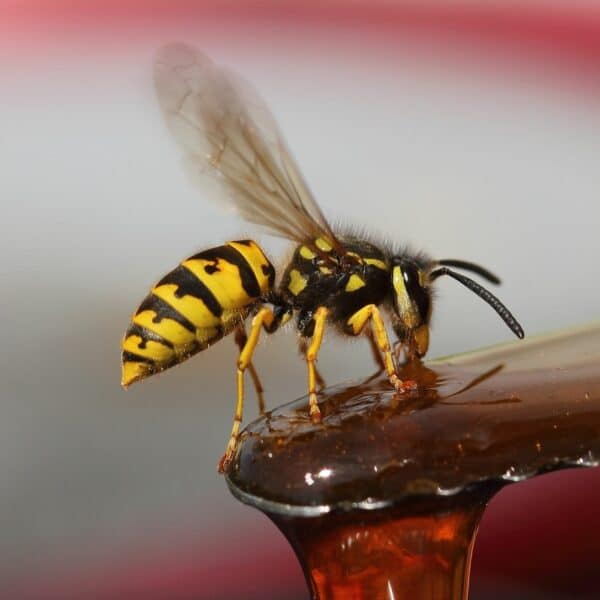Yellow jackets are characterized by their yellow and black coloring and are known for being aggressive defenders of their nests. Unlike some stinging insects that only are capable of stinging once before dying, yellow jackets are capable of stinging victims multiple times, making these insects particularly menacing.
Size: 1/2 in.
Color: Black- and yellow-striped
Body Structure: Head, thorax, abdomen with a stinger and body-length wings.
Characteristics: Yellow jackets are social insects living in colonies. Colonies are comprised of sterile female workers, males, and fertile females that mate with males in the fall to become yellow jacket queens. Fertilized queens hibernate through the winter, whereas males and workers die as the weather turns colder.
Habitat/Behavior: Yellow jackets often nest near the ground, taking over old nests and burrows made by rodents. Yellow jackets also may build a nest in the walls of a home or other structure, under porches or steps, as well as in the branches of low-hanging trees or shrubs. While yellow jackets do help pollinate other plants and serve to control other pests like flies, they are scavengers who feed on refuse. They are particularly attracted to garbage.
Commonly Active: Spring and summer.
Prevention/Treatment: Because yellow jackets are particularly aggressive in defending their colonies, having an infestation near or around your home poses a threat the well being of your family and pets. As noted above, yellow jackets are capable of inflicting multiple stings, which may send highly allergic victims into shock.

